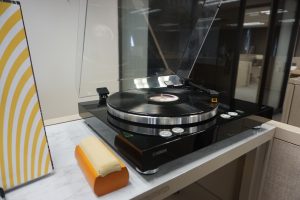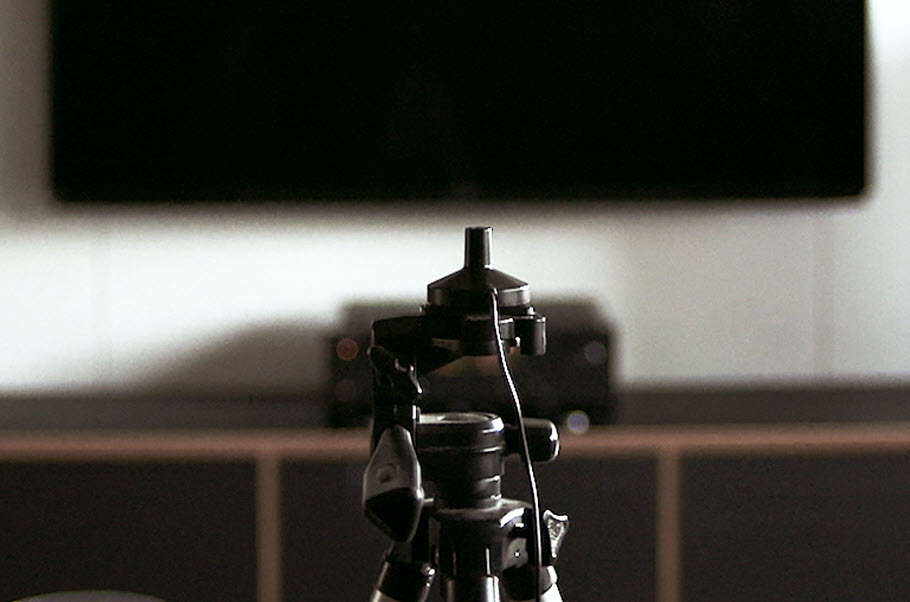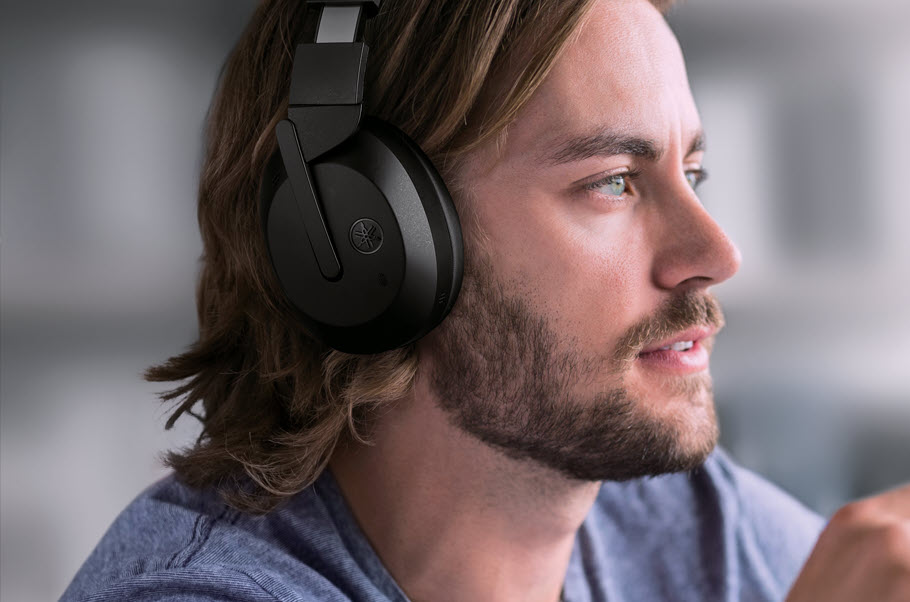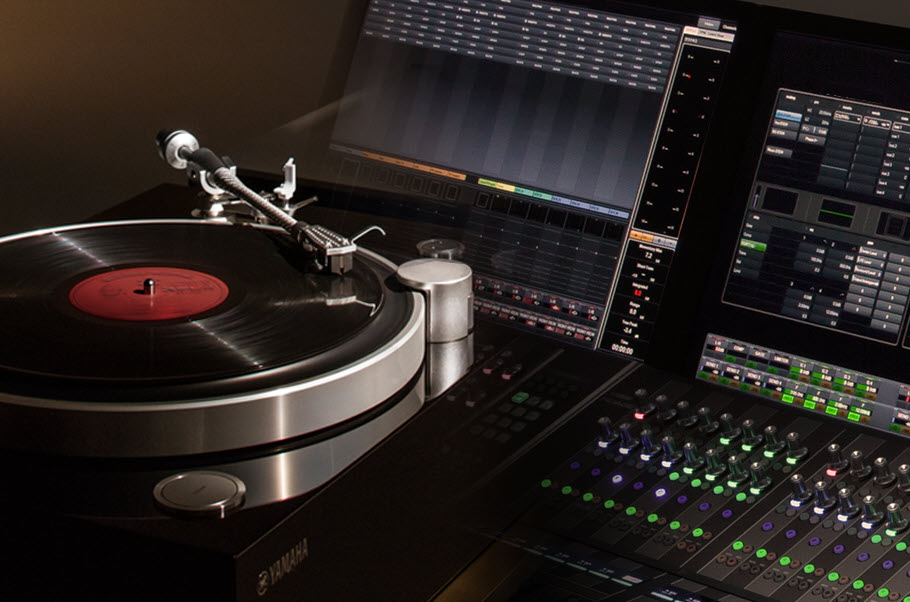Creating Sonic Ambiances in Office Spaces
Music is a great way to increase productivity in the workplace.
Vinyl has enjoyed a remarkable resurgence in recent years as people reconnect with albums old and new. It’s a refreshing change for audio enthusiasts — one that has inspired a fun, engaging mode of home entertainment.
But why save all that enjoyment for weekends and after-hours? Why not also spin vinyl at the office, where many people spend the majority of their time?
These were the thoughts of Yamaha Content Marketing Specialist Ted Goslin when he recently decided to install a MusicCast VINYL 500 Wi-Fi Turntable at the company’s corporate headquarters in Buena Park, California and link it to MusicCast wireless speakers positioned throughout offices, conference rooms, and other common areas in the building.

He had, he readily admits, some trepidation. How would his co-workers react to being surrounded by music? How would it impact their morale, and how would it influence their creativity? Would music make a real difference to productivity and efficiency, or would it fall on deaf ears?
Connecting, Sharing and Reminiscing
For the first few days, Ted kept the turntable spinning with his own picks. “I tried a variety of different albums to see what resonated,” he says.
Then something remarkable happened. People started talking. They began connecting, sharing and reminiscing. “The walls of the office figuratively came down,” Goslin says. “That turntable inspired some great conversation and a real sense of community. After months of isolation and working remotely, it helped bring our staff back together and generated a rapport that we all had come to miss so much.” And because it is based on Yamaha wireless multi-room MusicCast technology, the installation paved the way for even more engagement, allowing employees to selectively stream music to speakers via their own mobile devices and operate the system via voice commands.
What’s Old is What is New
Listening to music while working is nothing new. A Pandora survey of over a thousand employees in various industries found that roughly 42% listened to music throughout the entire workday, with nearly four out of five believing that it helped them get more done. This likely hasn’t changed. But what has changed is how music is delivered and consumed. Just as music playback has shifted from physical media to digital streaming, music listening has evolved from a solitary activity enjoyed by donning earbuds or headphones to a communal sensory experience that can be broadcast throughout an entire home or office via an audio distribution system similar to the MusicCast setup at Yamaha headquarters. And as people return from remote work-at-home to shared in-person offices, music has become the ultimate ice-breaker.
The positive effect this has had on Yamaha employees may be purely anecdotal, but it aligns with all the scientific data about music’s impact on office employees. A landmark study published in 1972 was one of the first to suggest a direct correlation between music and productivity. It showed that factory workers performed at a higher level when upbeat, happy tunes were played in the background.
But it’s not just productivity that improves. Background music also reduces stress and anxiety, elevates mood, and establishes a healthier, more enjoyable work environment. “We definitely noticed that the day went by faster and that we had more fun at work when music was playing,” Goslin says. “It also seemed to spark creativity and improve concentration.”
Taking it to the Next Level
But getting the most out of music at the office involves more than simply hitting play and walking away. The volume, cadence and style of music influence its overall impact, as does when and where it’s played. Goslin discovered this first-hand. “People seemed to work better when listening to classical music rather than songs with heavy vocals, especially first thing in the morning,” he says. “Livelier music and movie soundtracks, meanwhile, seemed to be a good pick-me-up in the afternoons.”
Although Goslin hasn’t yet gone so far as to curate and automate the delivery of custom playlists to keep pace with the mood of the office, it’s a step some companies are starting to take. They, like Yamaha, recognize that tailoring music around work activities and the time of day yields better results than distributing random songs at the same volume level to every huddle space, conference room and cubicle. An intelligent, programmable audio system goes several steps further, altering what, when, where, and how the music plays to evoke the ideal ambiance for better health and wellness, productivity and efficiency, collaboration and communication, along with job satisfaction and retainment.
An office’s “sonic signature” can take many forms. While the employees of one company might like to start the day with a compilation of quiet, relaxing sounds, those at another place of business might work better when the tunes are lively and energetic. The music needs to align not only with the preferences of employees, but with the design of the office as well. Here’s where a multi-zone audio system like MusicCast can help. It allows different streams of music set at different volume levels to travel simultaneously to different areas, so, while collaborative spaces can be filled with instrumental background music, loudspeakers in the lobby can simultaneously broadcast a series of warm, inviting tunes; high-traffic areas and break rooms, meanwhile, can resonate to the sounds of upbeat, invigorating pop songs.
Then there are individual employee offices. Being able to synchronize their own playlists with the system allows the occupants to play what they want, when they want it, on their own speakers. Some systems are so smart, they can kick-start the perfect piece of music automatically as employees enter a room, then turn it off when the room empties. This capability, along with pre-scheduled and zoned delivery, affords a slick, fresh, modern approach to office audio that seamlessly establishes the right mood, ambiance, and energy.
Achieving this level of audio sophistication doesn’t happen via Wi-Fi connectivity alone. There are a number of acoustical parameters and technological details that need to be explored and mastered for optimal performance. Professional AV integrators possess the necessary specialized knowledge and have the skills to turn planning into reality, making them a key part of the design, programming and installation process. These professionals can recommend the right system, configure and install it properly, and transform ordinary office spaces into engaging and inspiring work environments.
So what are you waiting for? If you’re looking to improve productivity in your workspace, try adding some music to your day.
Click here for some recommended Spotify playlists to listen to while you work.
















